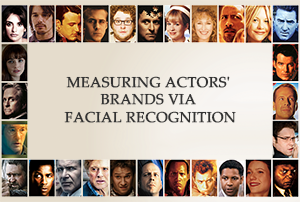 Last week I shared my research into movie posters, in which I used facial recognition to track the emotions displayed on the faces of the lead actors. Today I thought I would follow another thread made possible by this method and look at the brands of some major Hollywood actors.
Last week I shared my research into movie posters, in which I used facial recognition to track the emotions displayed on the faces of the lead actors. Today I thought I would follow another thread made possible by this method and look at the brands of some major Hollywood actors.
When deciding what movie to watch, we as audience members don’t actually have much information to go on. I know it can sometimes feel as if the studios are bombarding us with loads of trailers, clips and adverts but take a step back and look at what information they’re actually conveying. In most cases, all of the ‘stuff’ they’re throwing at us is on the same theme and aiming to convey one simple message, such as “This film is funny” or “This film is exciting” etc. If they manage to implant this in our minds, then we will often feel empowered enough to make a choice whether to see it or not.
To do this, movie marketers most often rely on four main weapons:
- Social proof. The most powerful form of film advertising is a recommendation from people we trust, such as friends, family and reviewers or from publications we trust.
- Previous works. If you liked Transformers 1, 2, 3 and 4, then you’re probably going to like the fifth instalment. This is one of the reasons why Hollywood loves sequels, prequels, spinoffs and reboots.
- Genre. Most writers and creatives find the confines of genre restrictive and reductive, as it forces all movies to self-identity within a small number of semi-arbitrary archetypes. In addition, there are no universally agreed genres, and some define the contents (i.e. comedy), some define how you will feel (i.e. horror), some describe production methods (i.e. animation) and some are incredibly vague (i.e. drama). And yet marketers love genre definitions as they allow them to quickly paint a detailed picture drawing on the audience’s existing knowledge and emotions. Instead of having to describe exactly what ‘Shaun of the Dead’ is, they can just say a “Romantic-Comedy Zombie” film.
- Actors. The leading actors can play an important role in telling the audience what to expect from a movie. If we hear of a new movie called “The Boy” and all we know is that Julia Roberts stars in it, then we may expect it to be a heart-warming, if sometimes tough to watch, drama. If the lead changes to Jason Statham, then we now expect the movie to be about a tough man who has to punch his way to rescue the kid. If it’s Liam Neeson, then we can expect harder punches and there’s a high chance the kid won’t live to see the end credits.
Today we’re going to take a look at the last one on that list by using a facial recognition engine to see what emotions are on show and thereby get a sense of the ‘brands’ of certain major stars. A movie’s poster is the single most important image in the promotion of a movie and every element of it will have been picked carefully by the movie’s marketers in order to convey their simple message overall. We can be confident that if an actor looks very angry on the poster, it was a deliberate choice based on the belief that audiences would be keen to see a movie with that actor being angry.
There are more details of my methodology in my post last week and in the notes at the bottom of this post. The short story is that I found posters of every movie released in US cinemas 2000-16 and ran them through Microsoft’s Azure Emotion engine. This provides a numerical value for the levels of key emotions (anger, contempt, disgust, fear, happiness, sadness and surprise) in every face it can spot. Today I focused on 64 major Hollywood actors who have had multiple films on release since 2000 and who frequently show up on posters for their movies.
Which actors most embody anger, disgust, happiness… etc?
For each of the seven key emotions, I calculated the median value for each Hollywood star and then compared it to the average of all actors on all movie posters (2000-16). This gives us a league table of the actors by emotion and allows us to see how their emotional performance compares with the average for all movie marketing.
The angriest actor was, perhaps unsurprisingly, Dwayne Johnson (a.k.a. The Rock). Across all of the movie posters he appeared on, he was six times angrier than the average actor.
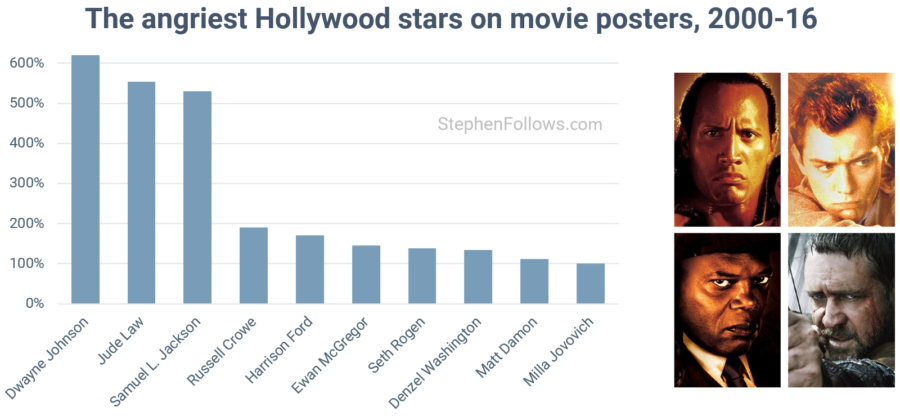
Last week we saw that the genre with the highest levels of contempt was comedy, so it’s fitting that the most contemptuous Hollywood star is Seth Rogan. On average, he displays over twice as much contempt as the average actor on a movie poster. However the rest of the list is dominated by male action heroes, the only women appearing on it being Reese Witherspoon and Naomi Watts.
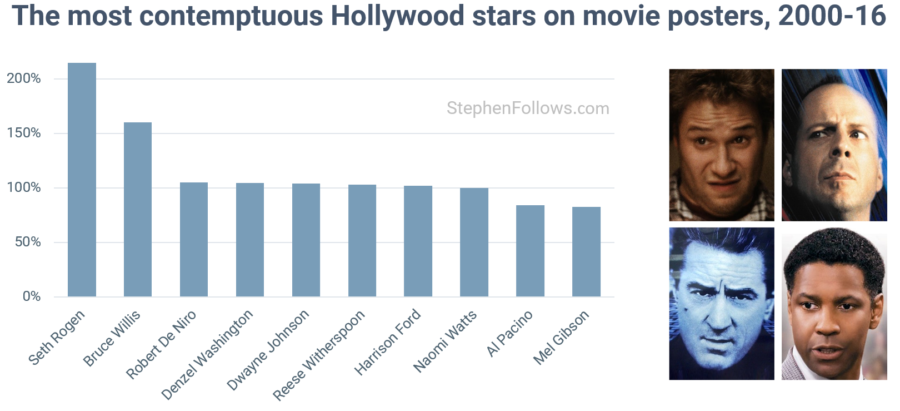
Harrison Ford’s brand is largely centred around his characters’ grumpy temperament, cutting insults and withering looks, so it feels appropriate that he takes the top spot as Hollywood’s ‘most disgusted’ star.
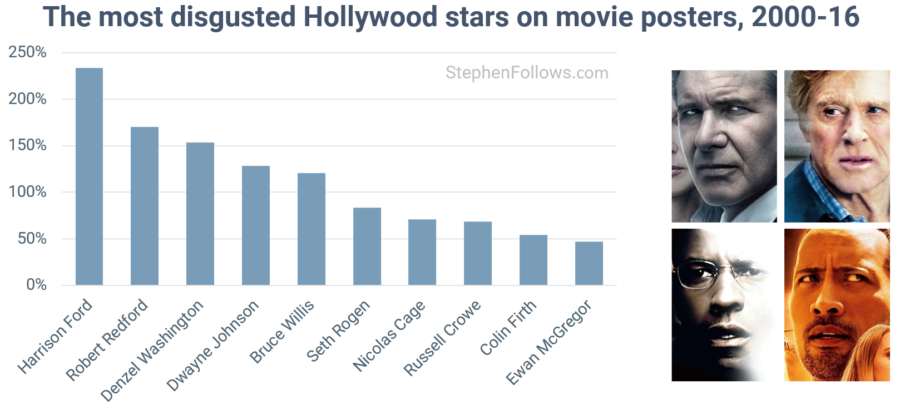
The league table of ‘most fearful’ stars is interesting for two reasons. Firstly, it’s dominated by male action stars, whereas most people would have assumed that it would feature horror stars (as horror movie posters rely heavily on fearful looks). Secondly, all but one of the people on the list exhibited less fear than the average for all actors (i.e. the full database of stars, lesser-known actors and unknowns). These two facts suggest that when Hollywood movies display scared people on their posters, they are frequently not Hollywood stars. It appears that either Hollywood stars do not want to be seen to be fearful on posters, or perhaps movie marketers have concluded that audiences don’t want to pay to see their favourite stars experiencing high levels of fear.
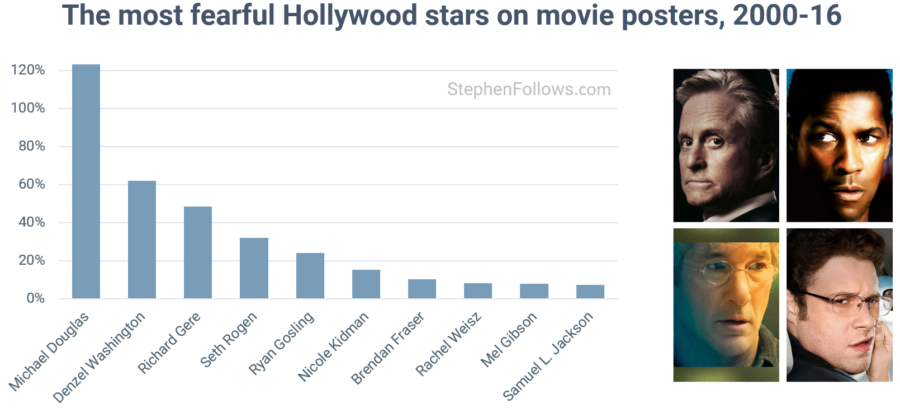
The only star to take the top spot in two categories is Seth Rogan, who as well as being ‘Most Contemptuous’ is also ‘most surprised’. As with fear, surprise is an emotion more often exhibited by unknown actors rather than Hollywood stars.
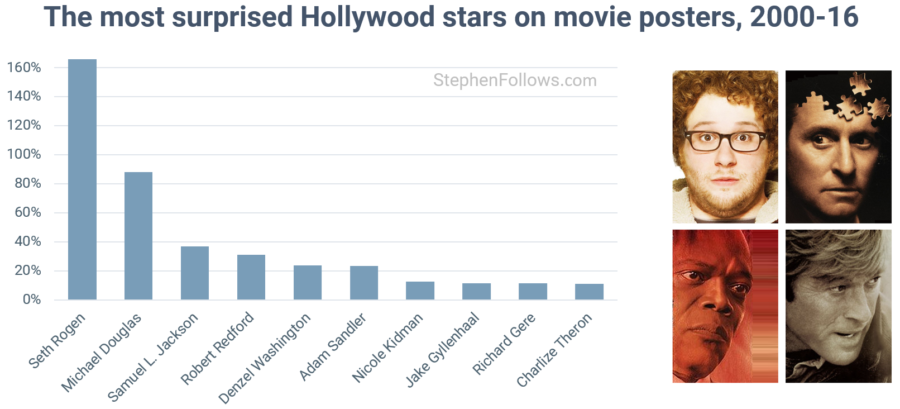
So far only 14% of the actors in the top ten charts have been women, so it’s nice to find one emotion where women dominate – happiness. The only male stars to make the list were Kevin Spacey and Matthew McConaughey. The top spot is taken by Renee Zellweger, who shows over three times the average level of happiness across all posters.
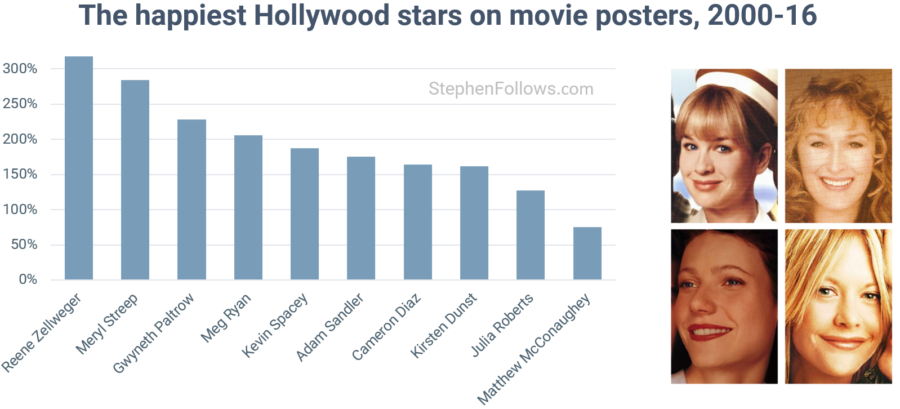
And, following years of internet speculation, I can confirm that Ben Affleck is officially the saddest star in Hollywood. In his defence, even though he takes the top spot among Hollywood stars, he still displays a lower than average level of sadness when compared to all actors on movie posters. This is probably due to the fact that sadness is common among dramas, most of which are lower budget films and therefore do not feature Hollywood stars.
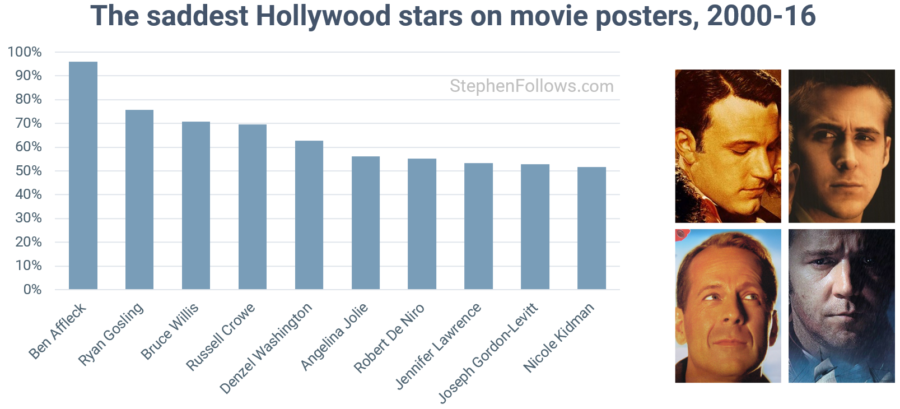
Purely in the interests of scientific research and completeness, here is the video which kicked off the ‘Sad Affleck’ meme:
Which Hollywood stars display the least emotion?
Finally, let’s look at the stars displaying the least emotion on their posters. When I started this project I expected to find that actors who often get accused of wooden acting would top the list of ‘most neutral’ stars. However, as you can see below, that doesn’t seem to be the case (save for one of them).
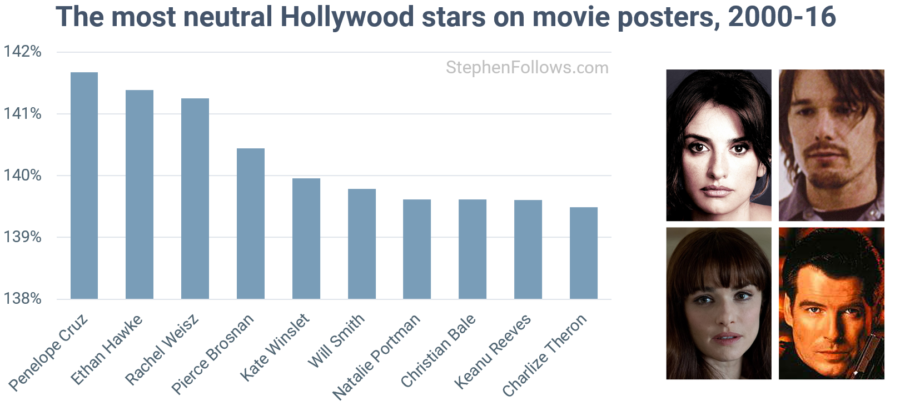
Notes
It’s worth reading last week’s article where I went into more detail about my methodology and analysis. The short answer is that I collected movie posters for all movies which grossed at least one dollar in US cinemas 2000-16 and ran them through Microsoft’s Azure Emotion engine. For today’s research, I isolated 64 Hollywood stars based on fame and how many of their posters featured faces which the Azure engine could spot and analyse.
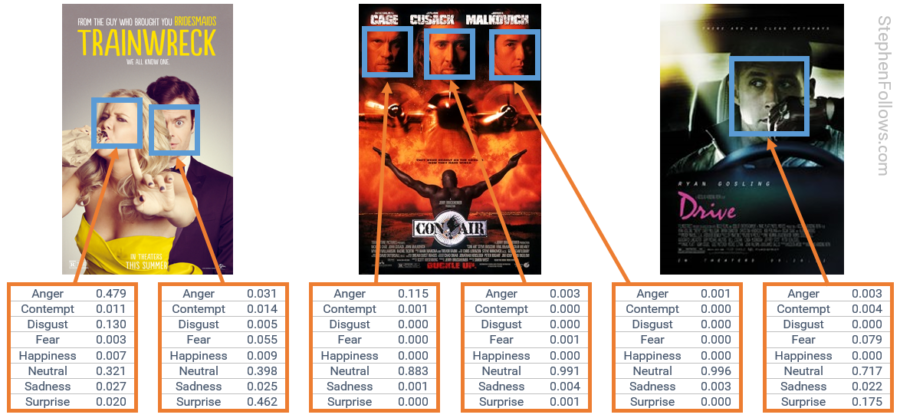
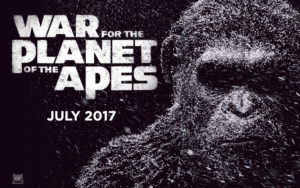 This study looked at posters for movies released between 1st January 2000 and 31st December 2016. Therefore, some of the actors I looked at will have had starred in many films earlier in their career. An actor’s brand and image can change significantly over time and so it’s reasonable to assume that some of the league tables would change if we extended the study back into the 20th century. For example, Michael Douglas could lose his ‘Most Fearful’ top spot if we included his early work.
This study looked at posters for movies released between 1st January 2000 and 31st December 2016. Therefore, some of the actors I looked at will have had starred in many films earlier in their career. An actor’s brand and image can change significantly over time and so it’s reasonable to assume that some of the league tables would change if we extended the study back into the 20th century. For example, Michael Douglas could lose his ‘Most Fearful’ top spot if we included his early work.
This is a study of faces on movie posters, meaning that if a star does not appear on the poster, I couldn’t track their brand. For example, Andy Serkis has starred in many Hollywood mega-movies but doesn’t tend to appear on the posters (well, appearing as a human rather than CGI version of him as a chimp, Gollum, etc).

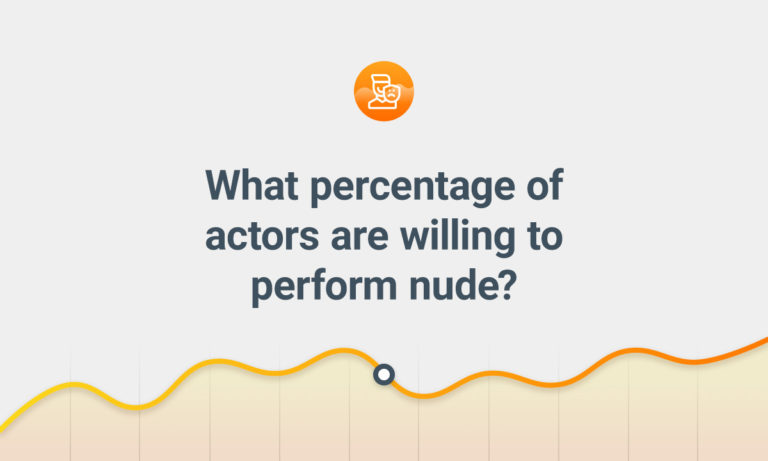
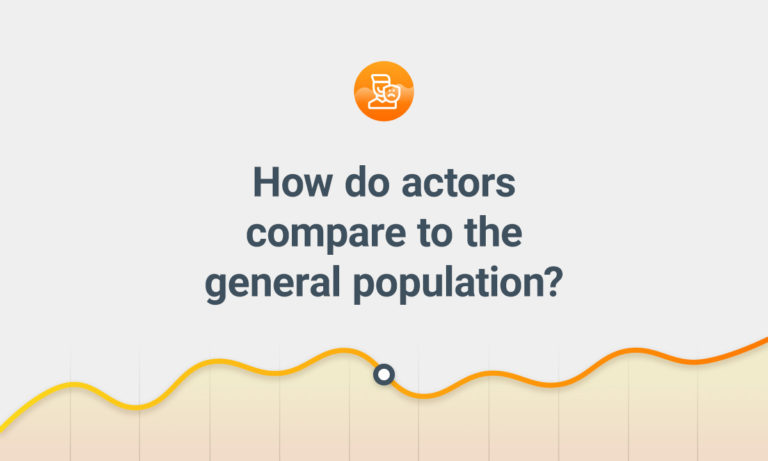
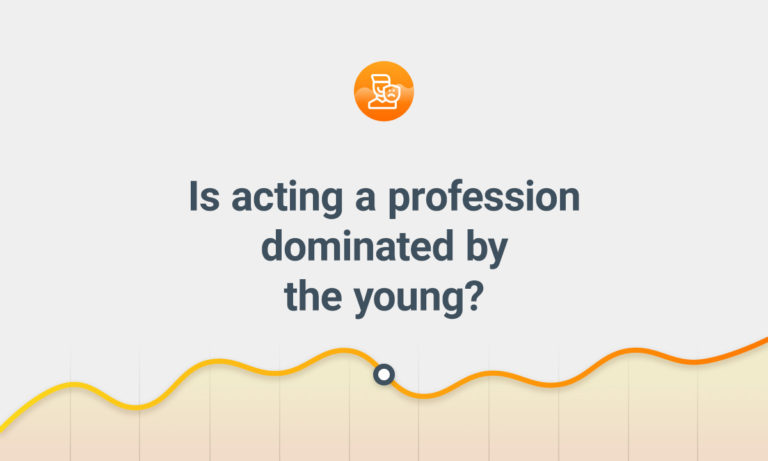

Comments
This is fantastic stuff. Who’d have thought that Jude Law was so angry? (Or Penelope Cruz so inscrutable?)
Thanks for your point ! so exciting~
Someone used your paper which lead me to your blog.
I really like the idea for this, but the software doesn’t seem to be there yet. I felt like a lot of the descriptions didn’t match the depicted emotion. I wonder if re-doing this now, almost four years later, would yield different results?